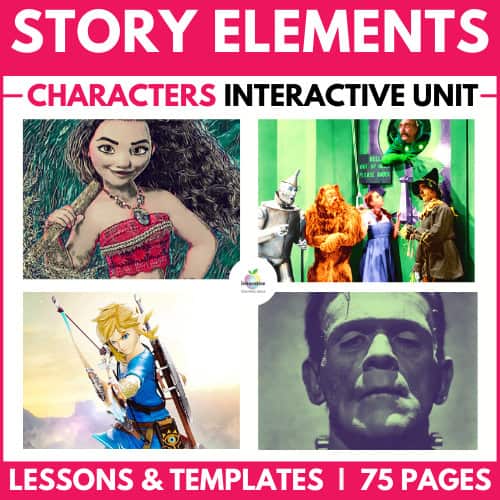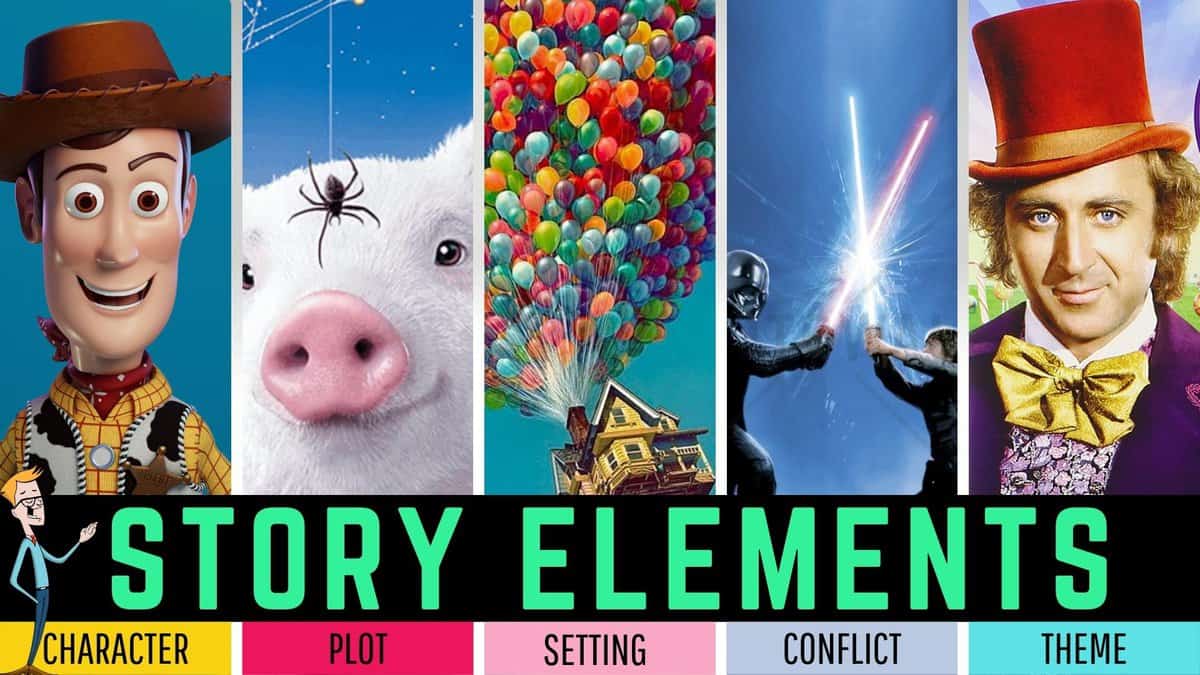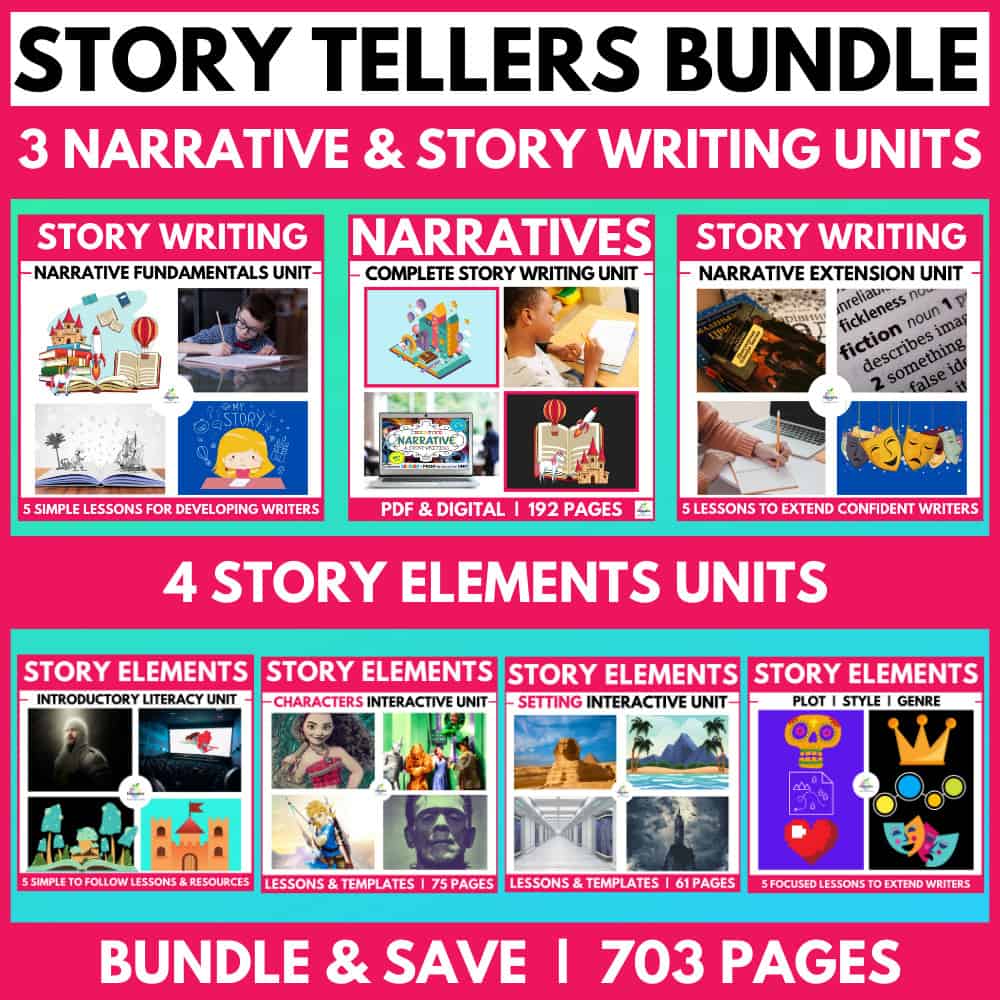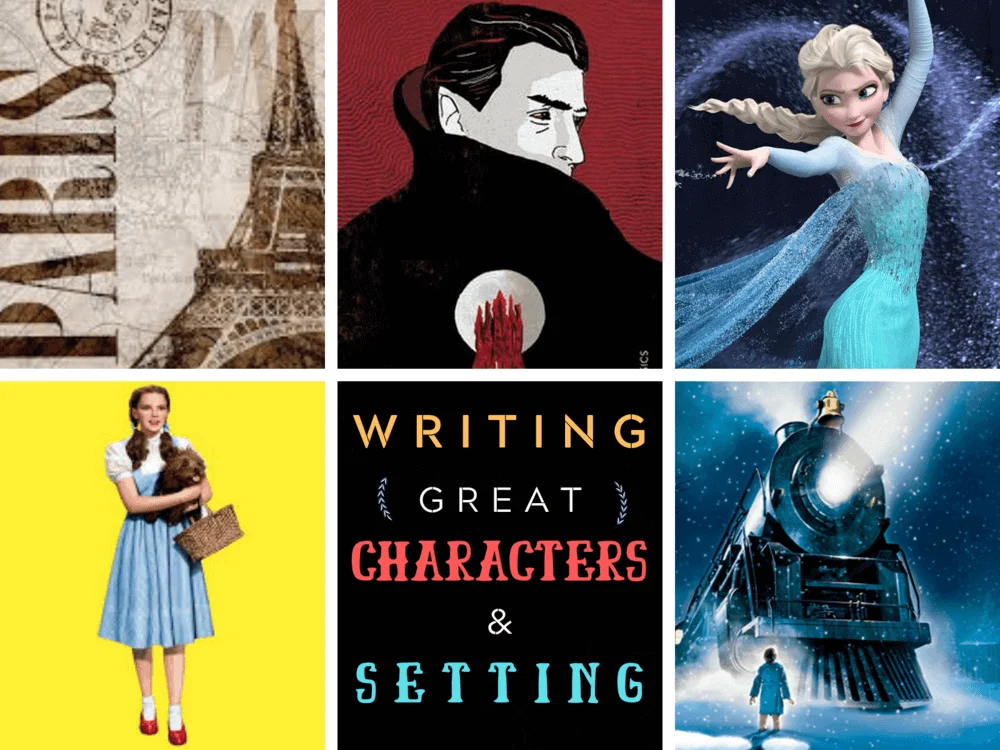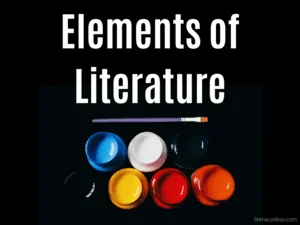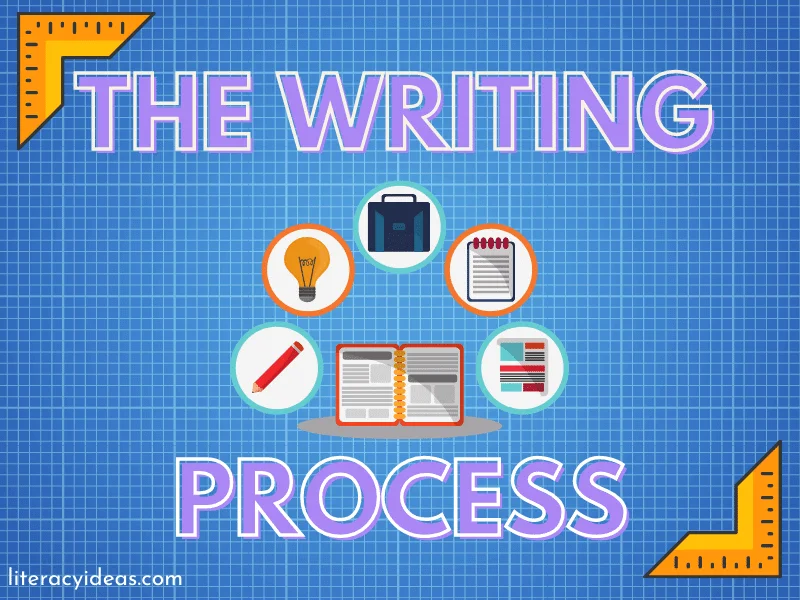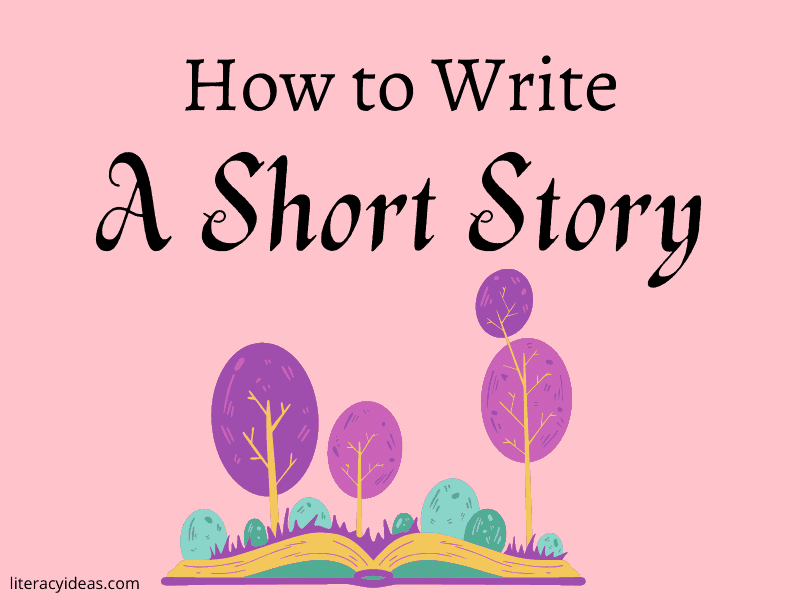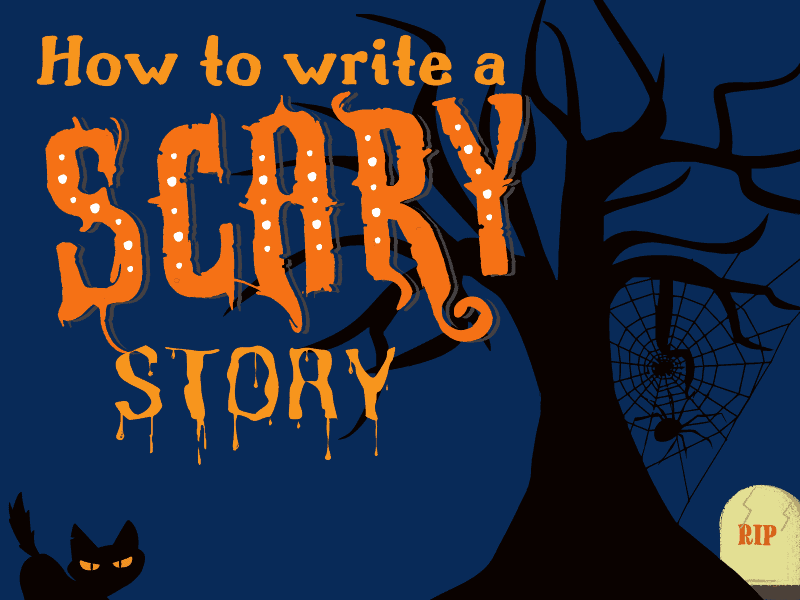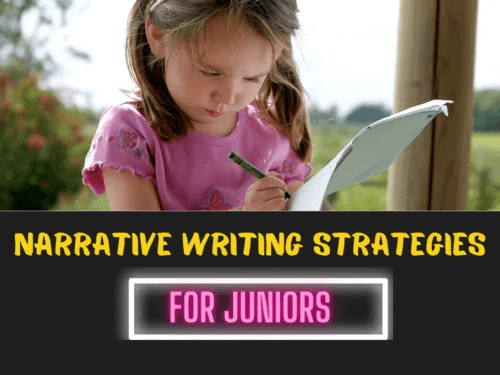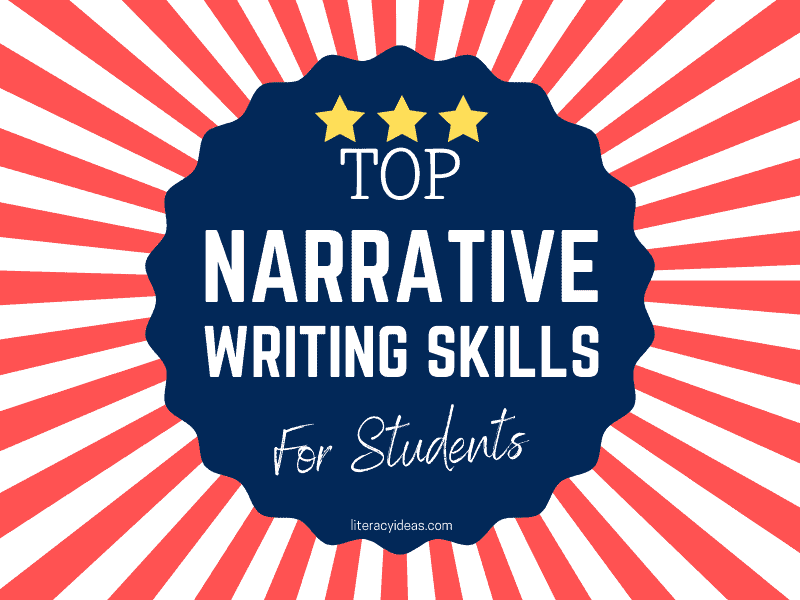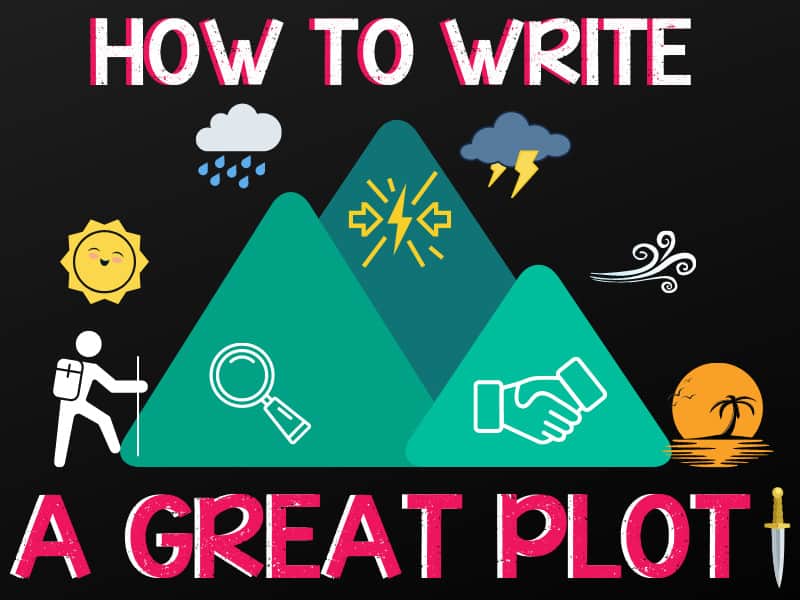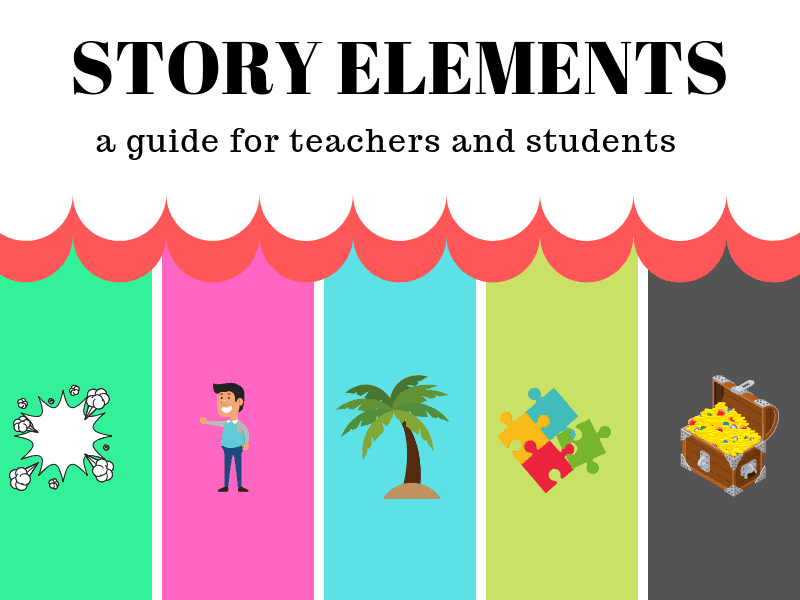
What Are Story Elements?

Developing a solid understanding of the elements of a story is essential for our students to follow and fully comprehend the stories they read. However, before students can understand how these elements contribute to a story’s overall meaning and effect, they must first be able to identify the component parts confidently.
So, what are the elements of a story, then? For the purpose of teaching our students, we can usefully divide these elements into two groups.
The first group comprises the basic components of a story and is generally taught to elementary and middle school students, while the second group consists of more complex elements taught to more advanced students.
Though the elements identified below provide a comprehensive overview, they are not an exhaustive analysis of every possible element of a story.
BASIC STORY ELEMENTS
these are the five key elements of a story
- Character: Depending on the nature of the story, characters are most often people or animals. Writers use characters to perform the actions and speak the dialogue of a story. They move a story’s plot forward. They are the who of a story. Be sure to read our complete guide to writing great characters here.
- Setting: A story’s setting refers to the physical location and the time the action takes place. It is the where and the when of a story.
- Plot: The plot relates to the events that happen in a story. The plot can be further divided into sub-elements: introduction, rising action, climax, falling action, and resolution. It is the what of the story. The plot usually begins with a problem and ends in the story’s resolution. Be sure to read our complete guide to writing a great plot here.
- Conflict: Every story worth its salt requires conflict. This conflict can be considered a challenge or problem that drives the story’s action. No conflict, no story. Setting up a series of cause and effect events, conflict gives these events their why.
- Theme: a little more abstract than the previous elements, the theme refers to the underlying insight, moral or idea the writer expresses through the story. It is often thought of as the ‘message’ of the story.
THE ULTIMATE STORY ELEMENTS VIDEO (6 minutes)
More Advanced Elements
When students have gained sufficient experience in recognizing these essential story elements, they can then begin work on the story elements that are more advanced, regardless of their age.
Let’s take a brief look at four of these more advanced story elements.
- Point of View: To identify the POV in a story, students must ask, “who is telling the story?” Is it a first, third, or even second (rare!) person narrator? Are they omniscient or limited in their perspective? Does the perspective shift between different characters?
- Tone: A writer’s tone is established through word choices, use of literary devices, grammar, rhythm, rhyme etc. The tone is the overall ‘flavour’ of the story that is created by using all of these combined techniques. It is the attitude the writer displays towards their subject or theme.
- Style: Related to tone in many regards, style is the individual author’s unique voice, which is again evidenced in their word choices, plot patterns, sentence structures etc. The writer’s personal style is a strong contributor to a writer’s tone.
- Mood: This is about the effect the writer creates in the reader and how they evoke it through their use of language.
These more advanced elements are a little more difficult to define than those on the basic list and, therefore can be confusing for students who are new to them. All these elements pertain to how words are used, but style also pertains to the purpose of the text, tone to the author’s attitude to the subject, with the mood being concerned with the reader’s attitude to the subject.
Why Are Story Elements Important?
There are many reasons students need to be well-versed in identifying the elements of a story, not least of which is the deeper levels of comprehension and enhanced appreciation this brings. Understanding how a story is organized is necessary for students to access the highest levels of comprehension of that story. Understanding how a story is organized also provides students with a frame of reference that significantly assists with recall. Often necessary, especially where exams are concerned, the implications here for subjects outside the English classroom are apparent too.
Being familiar with the various elements that combine in good storytelling also helps students in their writing. It helps students to organise their thoughts and competently weave together the various threads of their own stories. No small feat for an experienced writer, let alone a novice!
HOW TO HELP STUDENTS IDENTIFY STORY ELEMENTS
Getting to grips with the various elements of a story begins very early on with the first stories children hear. Often even before they begin elementary school. Students will have learned to identify the essential elements in stories by answering simple questions about the people in the story and the events that happened.
As students grow confident in identifying the key elements in their favorite stories, they begin to move on to more complex stories. They begin to recognize the more complex elements that require more advanced critical thinking skills.
In their simplest forms, activities to aid students in identifying story elements start with answering basic guided questions before students begin to move on to more focused reading activities, a few of which we will look at here.
STORY ELEMENTS GRAPHIC ORGANIZERS
Graphic organizers are a great way to assist students in extracting the elements of a story and organizing them in a visual way that helps them to comprehend the story better. They can further assist students in recalling, retelling, and summarizing. One of the best-suited graphic organizers for identifying story elements is the story map.
Story Maps
Story maps help students organize the elements of the story in a visual manner that assists in gaining fuller comprehension. Students examine the assigned text and extract the information related to each element. They can then record this information on their copy of the story map.
Story maps easily lend themselves to being differentiated, as the teacher can select the elements most appropriate for the age and ability of the students. In the beginning, students should gain experience identifying the basic elements in simple stories – fairy tales for example – before moving on to more sophisticated stories employing a wider range of elements.
Practice in the use of story maps will see students develop the ability to efficiently summarize the characters, setting, theme etc., of any reading material instinctively. Story maps can also be used as a valuable prewriting planning exercise.
Eventually, in regards to reading, students will be able to identify a story’s elements naturally, without the aid of a story map or graphic organizer of any sort – though this option will always remain for those who require the additional support a story map offers.
Story Elements ACTIVITIES FOR TEACHERS AND STUDENTS
As we have noted, for the advanced student, there are a lot of different component parts of a story to identify and work with. We could isolate each element and build a series of discrete lessons around each. The possibilities are endless, and it is obviously impossible to cover every possibility here. However, it is worth looking at three more general activities to ensure students understand story elements and how they work.
Activity 1: Read, Roll, and Retell
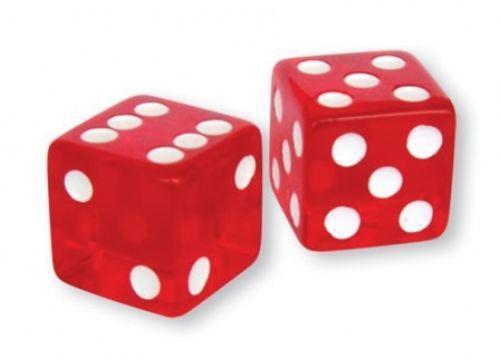
This simple activity is a fun way for students in a group to review material they have recently read. It begins with a student rolling a die or dice. The number they roll corresponds to a list of questions on each story element.
For example, the student rolls a three, which corresponds to a question on the setting, such as Where and when did this story take place? The student then answers in as much detail as possible regarding the text.
This activity can easily be differentiated by increasing the number and complexity of the questions and broadening the range of elements included. More than one question about each element can be included too.
Activity 2: Pick a Part
This activity works well with students working in pairs. Each student has a copy of the story. The various story elements are written on pieces of card: character, setting, mood, tone etc. Students take turns picking out a piece of card, ensuring their partner does not know which element they selected. They must then read a brief extract from the story corresponding to that element. Their partner must attempt to identify the element. When their partner has successfully identified the story element, it is their turn to pick a card.
Activity 3: Story graph
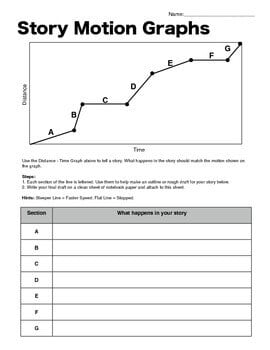
This activity works best for recording the sub-elements of the plot, such as exposition, rising action, conflict, falling action, climax and resolution. The storygraph works as a straightforward graph with the various elements above listed on the x-axis, according to their chronological appearance in the text. The y-axis represents excitement, with the most dramatic points plotted higher. Students plot these points for each element. For example, the exposition of the story (usually corresponding to the setting of the scene, the introduction of the characters etc.) will be plotted relatively low in the excitement stakes, with the excitement gradually rising to the crescendo of the climax before dipping slightly for the resolution.
Students can further label these points on the graph with details of the corresponding events in the story.
Denouement
And so our story draws to a close, but let’s review the takeaways so that our students can live happily ever after – at least as far as story elements are concerned!
Many elements are at play when we drill down into how stories work. To comprehend a story, students must understand how the major elements interact. To do this, they will need to first be able to identify these elements accurately. This will require practice in the form of discrete lessons on story elements that are progressive in difficulty.
The ideas on story maps and other activities above represent a good starting point for these discrete lessons. But, it is crucial to reinforce this learning through reference and repetition in other lessons, where the main focus is not on the elements of a story themselves.
No magic is at play here; just practice, practice, practice. All very element-ary, my dear teacher!
Download our FREE Character Trait Lists now
327 DIFFERENT CHARACTER TRAITS broken into POSITIVE, NEGATIVE & NEUTRAL.
These lists are excellent for helping students to describe characters and objects when writing and help students get to know and understand different character traits.
STORY WRITING

Once you have developed a strong understanding of story elements, it’s time for your students to use them to become story creators and write grand narratives.
Ensure your students invest time in planning the essential elements (Setting, Character, Plot, Conflict and Theme) of a narrative and really flesh those elements out before chasing down a single idea they may have had, such as a story about a cowboy in space.
You can find our complete guide to narrative and story writing here, which is a must-read before you, and your students consider writing their next bestseller.
Be sure to flip many of the activities in this article around story elements so that they come at them from the author’s perspective more than the audience’s.


